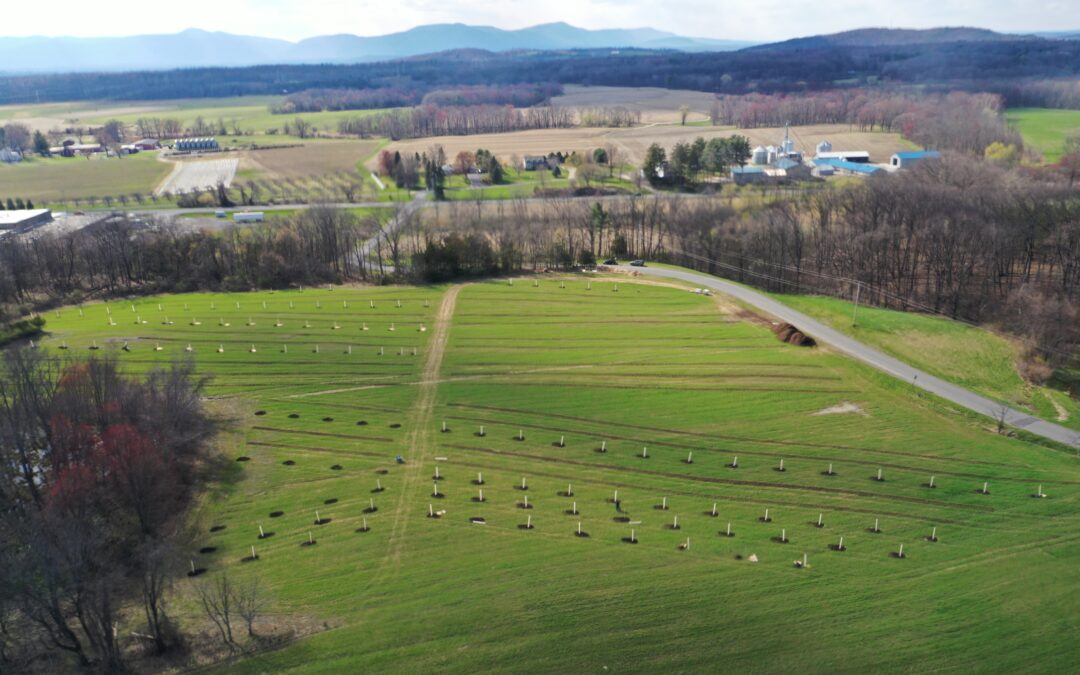How tree-planting startup Propagate Ventures monetizes land conservation
Heather Clancy
Thu, 07/09/2020 – 01:30
Earlier this year, when I was chatting with venture capitalist Nancy Pfund of DBL Partners about which new areas of climate solutions were intriguing to her, she pointed to business models that had the potential to monetize land conservation.
The example we discussed that day wasn’t one I would think of immediately: Better Place Forests, which is creating what it calls “conservation memorial forests.” It’s a different model for saving trees that takes a cue from the end-of-life industry.
Instead of buying a cemetery or mausoleum plot for cremated ashes, you or your family can pay toward the preservation of a tree — the fee starts at $2,900. The ashes are mixed with soil at the base, along with a memorial marker. Currently, the company is protecting forests in Northern California and Arizona. But that’s not all: For every person and tree it memorializes, it plants at least 25 impact trees in collaboration with the nonprofit One Tree Planted. And as of July 2019, the company had raised $12 million in early-stage venture funding (led by True Ventures) to help with its mission.
When I started poking around to identify other for-profit ventures in the business of land conservation, two other organizations that have been working with Microsoft jumped to mind, both of which provide technology for mapping and measuring forests: Pachama and Silvia Terra.
In May, I spoke with another intriguing agroforestry startup, Propagate Ventures, part of the fall 2018 cohort at Elemental Excelerator. The company, which recently raised $1.5 million in seed funding from the Grantham Environmental Trust, is focused on helping agricultural operations figure out how to profit from planting trees.
How do we improve the pasture but make sure it isn’t a sink on the wallet?
Like Pachama and Silvia Terra, Propagate’s competitive edge is analytics and information. It analyzes the costs of the investment, the potential revenue, the labor implications and the anticipated yield. Co-founder and CEO Ethan Steinberg said the concept is similar to the analysis tool a developer might use to assess the viability of a solar energy project.
“It’s focused on both the economics and the ecological value that is driven,” he told me. That includes formulating plans specific to keeping ownership of the investable assets (trees) separate from the real estate; that’s an important consideration for farmers who lease the land they are working.
The idea is to help agricultural operations use land that is otherwise fallow or unused to plant trees, usually intended for fruit, nut or timber cultivation.
When I spoke with Steinberg, the company had more than 20 projects on the books — ranging from livestock producers looking for a source of shade for animals to those growing specialty grain crops who are looking to diversify their income. Most of these organizations so far are in the Northeast and Mid-Atlantic regions of the United States, where Propagate is proposing the most ecologically approach options for their particular region. “Farmers shouldn’t transition to something that isn’t viable for their land,” Steinberg said.
What’s more, these arrangements generally are structured with a buyer or cultivation partners in place. “We are not having to recreate those relationships from scratch,” he noted.
One organization testing out this model is Handsome Brook Farms, a network of pasture-raised egg farms in states including Arkansas, Indiana, Kentucky, New York, Oklahoma and Tennessee. Chickens raised in this manner are free to roam in pastures — generally there are 400 birds to an acre. The farmers sell their eggs to Handsome Brook, which handles the processing and distribution. They have the autonomy to run their own operations, provided they meet the requirements for the pasture-raised model — the network farms are both certified and humane organic.
Kristen Wharton, director of strategic planning and development for Handsome Brook, said the idea of incorporating nut trees on certain properties is appealing and it’s testing the idea over the next year with a limited number of farms, starting in Kentucky. The main concern is cost, but many farmers are also leery of managing a secondary project. “How do we improve the pasture but make sure it isn’t a sink on the wallet?” she mused.
One possible option is a cost-sharing model, in which Handsome Brook would share some investment or investigate participation in grant programs that support soil health and water quality improvement projects, Wharton said. The top goal is to get the chickens to roam across a larger portion of the property, a habit that would counteract compacted soil and erosion around the barns where the hens take shelter. One question Handsome Brook hopes to answer: “How might this model set us apart?”
What other for-profit agroforestry ventures have caught your attention? Share ideas with me at heather@greenbiz.com.
This article first appeared in GreenBiz’s weekly newsletter, VERGE Weekly, running Wednesdays. Subscribe here. Follow me on Twitter: @greentechlady.
Conservation

